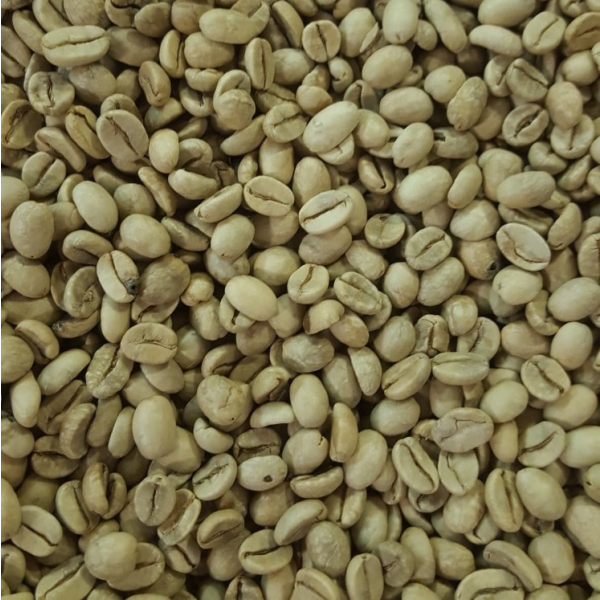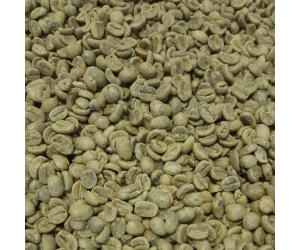Indian Monsoon Malabar Green Coffee Beans (Not Roasted)
Indian Monsoon Malabar Green Coffee Beans (Not Roasted) Sold in 1 pound (16 oz) increments.
Indian Monsoon Malabar green coffee beans are grown in India. They get their peculiar name from the method that is used to process the coffee beans. You have likely heard of dry process and wet hull process, but this process is known as Monsoon Malabar processing.
India is actually the fifth leading coffee exporter in the world today. There is a story that says a Muslim pilgrim visited the Holy Lands and when he returned he brought back with him seven seeds from an Arabica coffee plant. The legend goes on to say that the pilgrim placed those seven seeds in the soil near where he lived. The pilgrim is said to have dwelled in a cave located in Chikmahlur, and the seeds grew rapidly and produced well, propagating more seeds, until now that area in Kanataka State India is referred to as the ‘cradle of coffee’.
Monsoon Malabar Processing
Monsoon is the method of processing but this particular type of processing is unique to a region of India known as the Malabar region, so therefore the process name is often referred to as Monsoon Malabar instead of as just monsoon processing.
The idea for this type of processing was taken from the characteristics that coffee beans shipped to Europe on wooden boats developed after their long journey. Those coffee beans were transported in the bottom of the wooden vessels below the water line so they were exposed to a great deal of humidity and moisture from the saltwater. When the coffee beans got to Europe they had changed colors and become gold instead of bluish green, and they were twice the size of normal coffee beans.
To begin the monsoon process the coffee beans are first dry processed by the sun, and then the beans are graded. Only the highest grade of beans is selected to undergo the monsoon process.
The beans are then exposed to the monsoon winds on the western coast of India where the monsoon winds are the most prominently felt.
The coffee beans are stored in warehouses that have floors made of either brick or concrete. The beans are watched carefully during the twelve to sixteen weeks they are exposed to the monsoon winds. The caretakers of the coffee beans will rake them often and bag them, then change the bags they are kept in so that they receive an even amount of moisture.
The result of all of this labor and time are beans that swell up to be twice their normal size. The beans also go through a color transformation. They begin as bluish green coffee beans and after they have completed their process they are pale gold to light brown in color.
Then the beans are placed into dry bags and they are stored in an area where they will remain protected from rains and undo moisture.
What does the monsoon process do to the Indian green coffee beans?
After the coffee beans have been put through the monsoon process they develop wonderful licorice and cilantro flavorings that are not normally found in coffee beans.
When you use coffee beans processed in this manner to make espresso you can count on a creamier espresso that has the most alluring taste.
The monsoon coffee beans create very full bodied coffee that is exceptionally flavorful.
The coffee from these beans has almost no acidity to it because the process drew out the acid content from the beans. This leaves the coffee slightly thicker than average and it has no brightness to speak of.






